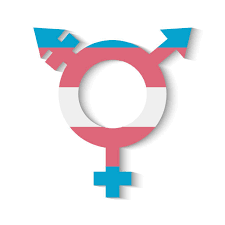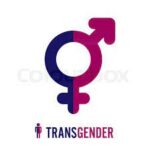Navigating the complex world of gender identity can be a challenge, not just for individuals but for society as a whole. The term "transgender" often stirs curiosity, confusion, and sometimes controversy. Through a sociological lens, we can better understand what transgender means, the nuances of gender identity, and the societal structures that impact transgender experiences. This article aims to unpack these concepts, providing a clearer picture of what it means to be transgender in today’s world.
Understanding Transgender: A Sociology Perspective
From a sociological perspective, "transgender" encompasses a range of identities that fall outside of traditional gender norms. This includes individuals who may identify as a different gender than the one assigned to them at birth, as well as those who reject binary classifications altogether. Sociology invites us to consider how gender is not just a personal identity but a social construct shaped by cultural norms, politics, and historical context. It highlights the importance of understanding transgender identities within the broader framework of societal expectations and power dynamics.Gender Affirming Hormone Therapy Near Me
When we explore transgender identities through sociology, we recognize that these identities exist amid a spectrum of experiences. Each person’s journey is influenced by various factors like race, class, and sexuality, indicating that there’s no one-size-fits-all definition. The study of transgender identities encourages a more inclusive and empathetic understanding of gender, urging society to question rigid norms and embrace diversity.
The Basics: What Does "Transgender" Really Mean?
At its core, "transgender" refers to individuals whose gender identity differs from the sex they were assigned at birth. This means a transgender person may be assigned female at birth but identify as male, or vice versa. Importantly, being transgender does not imply any specific sexual orientation; transgender individuals can be heterosexual, homosexual, bisexual, or otherwise. This distinction helps clarify that gender identity and sexual orientation are separate aspects of a person’s identity.
Understanding this definition is fundamental for fostering acceptance and awareness. It is essential to recognize that being transgender is not a mental illness, nor is it a trend; it is a valid and authentic aspect of human diversity. By demystifying the term, we can begin to cultivate a more informed dialogue about gender identity within society.
The Spectrum of Gender Identity: Beyond Binary Definitions
Gender identity goes beyond just male and female; it exists on a spectrum that includes non-binary, genderqueer, agender, and other identities. Many people fall outside the traditional binary framework, which can lead to a richer understanding of human identity. The binary system may simplify the conversation around gender, but it often leaves out those who do not conform to these labels. This spectrum highlights that gender is not solely determined by physiological traits but is also about personal and social experiences.
Sociology emphasizes the importance of recognizing and respecting this spectrum. It encourages conversations surrounding gender fluidity and the legitimacy of non-binary identities. This understanding helps foster a more inclusive society that is willing to embrace variation in gender expression and identity.
Key Terms: Transgender, Cisgender, and Gender Nonconforming
To navigate conversations about gender identity, it’s crucial to distinguish between key terms. "Cisgender" refers to individuals whose gender identity aligns with the sex they were assigned at birth. In contrast, "gender nonconforming" describes people whose gender expression does not fit societal expectations associated with their assigned sex. Understanding these terms can help clarify discussions and promote respectful interactions.
These distinctions are important in not only acknowledging the diversity of gender identities but also in recognizing the different experiences and challenges faced by transgender and gender nonconforming individuals. By familiarizing ourselves with these terms, we can foster more inclusive dialogues and greater sensitivity towards varied gender identities.
Historical Context: Transgender Identity Through the Ages
Transgender identities are not a modern phenomenon; they have existed in various forms throughout history. Many cultures have recognized and honored gender diversity, with concepts like "Two-Spirit" in Indigenous cultures or hijra in South Asia. These identities were often woven into the social fabric, demonstrating that the understanding of gender has varied greatly across time and cultures.
Historically, however, many societies have marginalized transgender identities. The rise of Western medical and psychological frameworks in the 19th and 20th centuries often pathologized transgender experiences, labeling them as disorders. This historical context is essential for understanding the ongoing struggles for rights and recognition that transgender individuals face today.
The Role of Society in Shaping Transgender Experiences
Society plays a pivotal role in shaping the experiences of transgender individuals. From legislation and healthcare access to public perceptions and media representation, the societal context can create both challenges and opportunities. When transgender individuals navigate a society that often reinforces rigid gender norms, it can impact their mental health, self-esteem, and overall well-being.
Additionally, societal acceptance can vary widely, influencing the visibility and rights of transgender individuals. In some communities, acceptance is growing, leading to increased support networks, while in others, stigma and discrimination persist. Understanding this societal impact can shed light on the importance of allyship and advocacy in fostering a more inclusive environment.
Challenges Faced by Transgender Individuals in Society
Despite strides towards acceptance, transgender individuals still face numerous challenges. Discrimination in areas such as employment, housing, and healthcare can be significant barriers. Many transgender people encounter prejudice and bias, which can lead to economic hardships and social isolation. Additionally, the prevalence of violence against transgender individuals, particularly trans women of color, highlights the urgent need for societal change.
Mental health issues also disproportionately affect transgender individuals, often stemming from societal rejection and stigma. High rates of anxiety, depression, and suicidal ideation emphasize the critical importance of support systems and access to mental health resources tailored to their needs. Addressing these challenges requires collective awareness and action from society as a whole.
Building Allyship: Supporting Transgender Rights and Voices
Allyship is essential for promoting transgender rights and fostering an inclusive society. Allies can play a vital role by using their platforms to advocate for policy changes, amplify transgender voices, and challenge discriminatory practices. This can include everything from supporting gender-neutral bathrooms to advocating for comprehensive healthcare coverage for transgender individuals.
Moreover, education and awareness are key components of allyship. By confronting biases and misconceptions about transgender people, allies can help create a more empathetic society that values diversity. Building allyship is not only about supporting transgender rights but also about listening to and learning from transgender experiences to foster genuine understanding.
By unpacking the various facets of transgender identity through a sociological lens, we can foster a deeper understanding and appreciation of gender diversity. The journey toward acceptance requires ongoing education, advocacy, and allyship. By working together to dismantle societal barriers and celebrate the uniqueness of each individual, we can create a world that honors all gender identities and respects the inherent dignity of every person.


